Birmingham Library Parametric Study
Parametric. Systematic. Linear strategy. A pattern like the “flower of life” exemplified on the two layers of facade at the Birmingham Library in the United Kingdom represents one such language. The single shape of a circle can transform and create an elaborate system once finely executed.
Upon studying the Birmingham Library’s facade system, a precise and sequential fabrication strategy was understood. The complexity of the classic “circle of life” pattern can be broken down into a simple movement of circles. What starts as a simple grid of circles quickly becomes complex as layers are added and scaled.
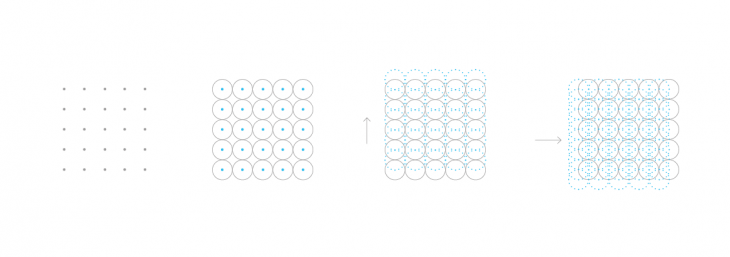
The color variance of the larger circle overlay versus the smaller circles help define the parametric system.
Through three iterations, the variables of intricacies were developed. These are delineated in each of the three renders as well as in the detail call-outs from each facade system here:

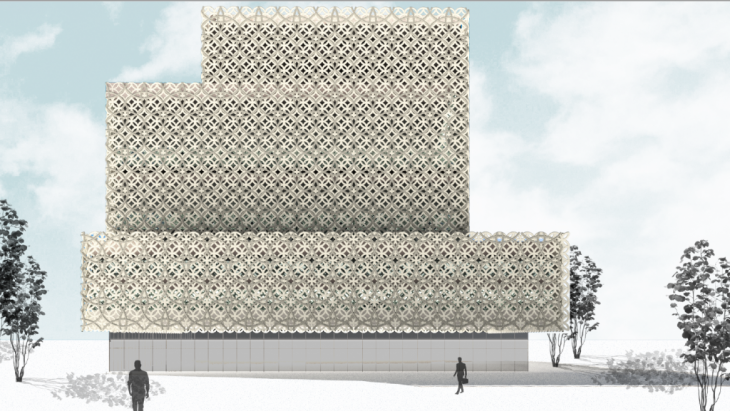 Elevation View:
Elevation View:
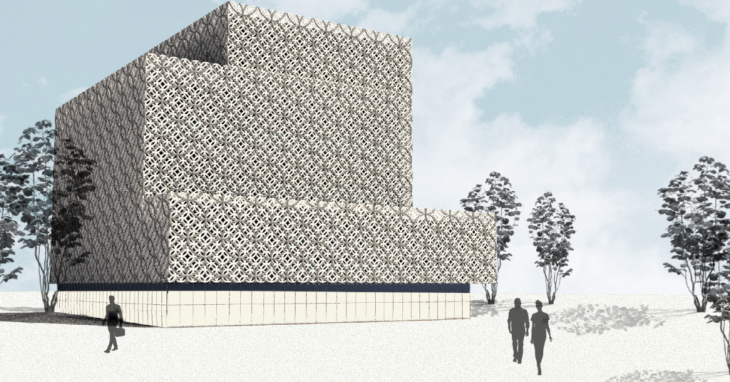 Perspective View:
Perspective View:
Between the grasshopper definition and the pseudo code, the breakdown of assembly was defined in technical as well as operational terms.
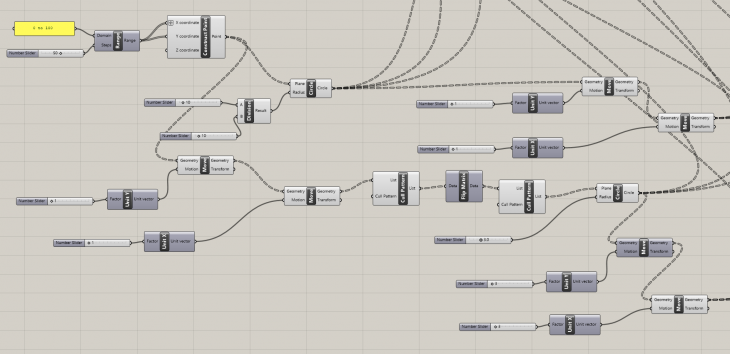 The first section of Grasshopper code designing the parametric:
The first section of Grasshopper code designing the parametric:
 The second section of Grasshopper code trimming the parametric:
The second section of Grasshopper code trimming the parametric:
PSEUDO CODE:
1. construct a range of points in a grid system.
2. draw a clear series of circles defined by these points.
3. move the first grid of circles up (y) a distance of the radius of the circles.
4. move this new grid of circles over (x) a distance of the radius of the circles.
5. move the grid of circles to start creating a larger grid of circles.
– since the larger circles have a diameter of three of the smaller circles, cull or
remove the center point of the small circle one radius length up (y) and one
radius length over (x).
– swap the row that is three small circles wide to create a larger circle to take
their place.
6. define the new three-times-larger circles.
7. repeat steps 3. and 4. for the larger circles. The diameter here is x3 the size of
the initial smaller circles.
8. now that the geometric pattern of overlapping circles is in place, define the
sizes of the various facade components.
– measure in Rhino the height of each rectangle corresponding to the facade
systems based on the number large circles in the x and y direction.
– move these rectangles away from the edges to ensure that each piece includes
the full parametric design of circles (in the x and y direction).
9. trim away the exterior pattern to have a clean facade rectangle.
10. create a solid around the desired large and small circles in these given
rectangular parameters.
11. bake the pipe to have a solid in Rhino to work with.
12. repeat steps 8. through 11. for each desired facade system.
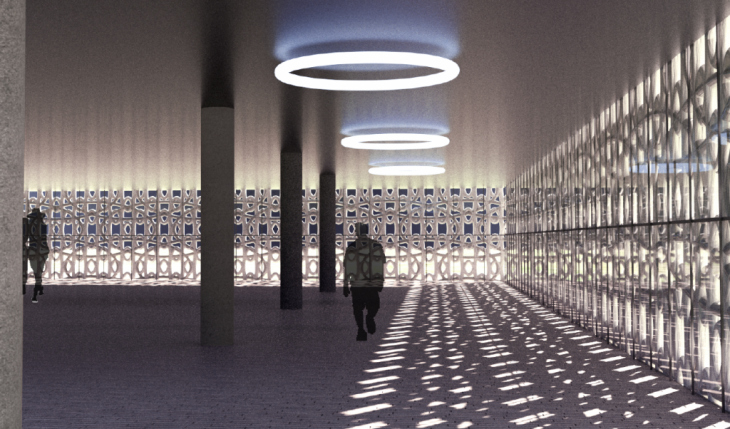 Interior View:
Interior View:
IAAC Birmingham Library Parametric Study – Masters in Advanced Architecture MAA1 – October 31st, 2018 – By: Sophia Molnar Di Biase – For: Computational Design, Rodrigo Aguirre/ David Andres Leon/ Danil Koshelyuk